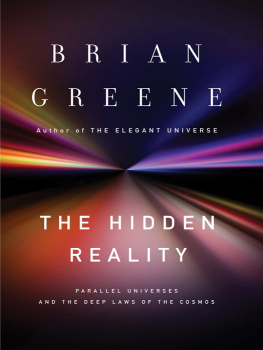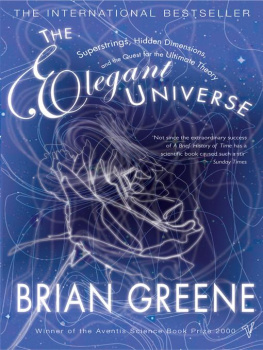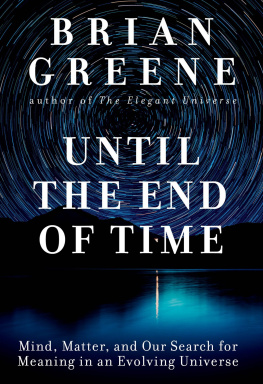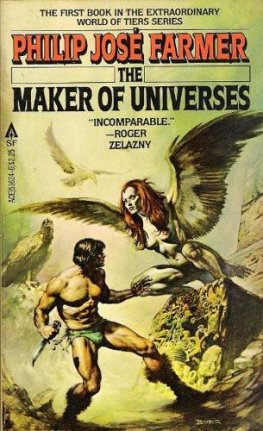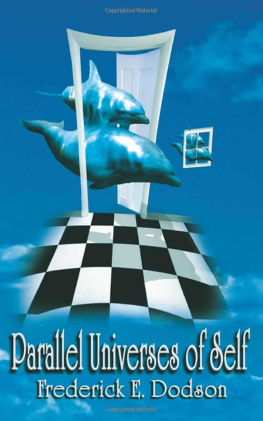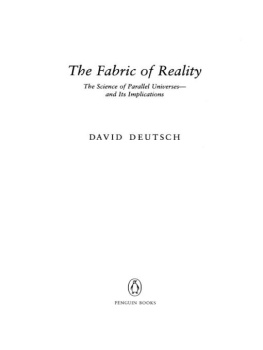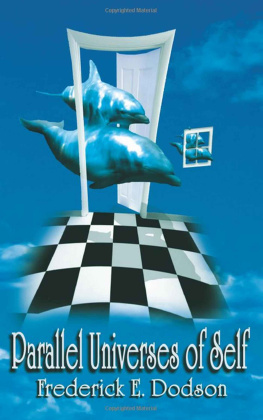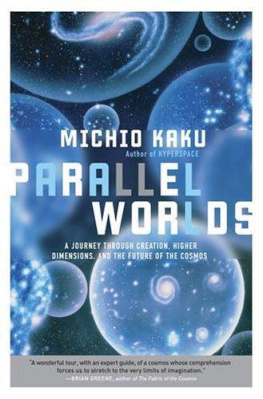Brian Greene - The Hidden Reality: Parallel Universes and the Deep Laws of the Cosmos
Here you can read online Brian Greene - The Hidden Reality: Parallel Universes and the Deep Laws of the Cosmos full text of the book (entire story) in english for free. Download pdf and epub, get meaning, cover and reviews about this ebook. year: 2011, publisher: Knopf Doubleday Publishing Group, genre: Romance novel. Description of the work, (preface) as well as reviews are available. Best literature library LitArk.com created for fans of good reading and offers a wide selection of genres:
Romance novel
Science fiction
Adventure
Detective
Science
History
Home and family
Prose
Art
Politics
Computer
Non-fiction
Religion
Business
Children
Humor
Choose a favorite category and find really read worthwhile books. Enjoy immersion in the world of imagination, feel the emotions of the characters or learn something new for yourself, make an fascinating discovery.

- Book:The Hidden Reality: Parallel Universes and the Deep Laws of the Cosmos
- Author:
- Publisher:Knopf Doubleday Publishing Group
- Genre:
- Year:2011
- Rating:4 / 5
- Favourites:Add to favourites
- Your mark:
- 80
- 1
- 2
- 3
- 4
- 5
The Hidden Reality: Parallel Universes and the Deep Laws of the Cosmos: summary, description and annotation
We offer to read an annotation, description, summary or preface (depends on what the author of the book "The Hidden Reality: Parallel Universes and the Deep Laws of the Cosmos" wrote himself). If you haven't found the necessary information about the book — write in the comments, we will try to find it.
The Hidden Reality: Parallel Universes and the Deep Laws of the Cosmos — read online for free the complete book (whole text) full work
Below is the text of the book, divided by pages. System saving the place of the last page read, allows you to conveniently read the book "The Hidden Reality: Parallel Universes and the Deep Laws of the Cosmos" online for free, without having to search again every time where you left off. Put a bookmark, and you can go to the page where you finished reading at any time.
Font size:
Interval:
Bookmark:

ALSO BY BRIAN GREENE
Icarus at the Edge of Time
The Fabric of the Cosmos
The Elegant Universe

THIS IS A BORZOI BOOK
PUBLISHED BY ALFRED A. KNOPF
Copyright 2011 Brian Greene
All rights reserved. Published in the United States by Alfred A. Knopf, a division of Random House, Inc., New York, and in Canada by Random House of Canada Limited, Toronto.
www.aaknopf.com
Knopf, Borzoi Books, and the colophon are registered trademarks of Random House, Inc.
Library of Congress Cataloging-in-Publication Data
Greene, B. (Brian), [date]
The hidden reality parallel universes and the deep laws of the cosmos /
by Brian Greene.1st ed.
p. cm.
eISBN: 978-0-307-59525-6
1. PhysicsPhilosophy. 2. Quantum theory.
3. General relativity (Physics) 4. Cosmology. I. Title.
QC6.G6885 2011
530.12dc22 2010042710
Jacket design by Peter Mendelsund
v3.1_r4
To Alec and Sophia
On Parallel Worlds
The Quilted Multiverse
The Inflationary Multiverse
On the Road to String Theory
The Brane and Cyclic Multiverses
The Landscape Multiverse
On Inference, Explanation, and Prediction
The Quantum Multiverse
The Holographic Multiverse
The Simulated and Ultimate Multiverses
Multiverses and the Future
If there was any doubt at the turn of the twentieth century, by the turn of the twenty-first, it was a foregone conclusion: when it comes to revealing the true nature of reality, common experience is deceptive. On reflection, thats not particularly surprising. As our forebears gathered in forests and hunted on the savannas, an ability to calculate the quantum behavior of electrons or determine the cosmological implications of black holes would have provided little in the way of survival advantage. But an edge was surely offered by having a larger brain, and as our intellectual faculties grew, so, too, did our capacity to probe our surroundings more deeply. Some of our species built equipment to extend the reach of our senses; others became facile with a systematic method for detecting and expressing patternmathematics. With these tools, we began to peer behind everyday appearances.
What weve found has already required sweeping changes to our picture of the cosmos. Through physical insight and mathematical rigor, guided and confirmed by experimentation and observation, weve established that space, time, matter, and energy engage a behavioral repertoire unlike anything any of us have ever directly witnessed. And now, penetrating analyses of these and related discoveries are leading us to what may be the next upheaval in understanding: the possibility that our universe is not the only universe. The Hidden Reality explores this possibility.
In writing The Hidden Reality, Ive presumed no expertise in physics or mathematics on the part of the reader. Instead, as in my previous books, Ive used metaphor and analogy, interspersed with historical episodes, to give a broadly accessible account of some of the strangest and, should they prove correct, most revealing insights of modern physics. Many of the concepts covered require the reader to abandon comfortable modes of thought and to embrace unanticipated realms of reality. Its a journey thats all the more exciting, and understandable, for the scientific twists and turns that have blazed the trail. Ive judiciously chosen from these to fill out a landscape of ideas that peak by valley stretches from the everyday to the wholly unfamiliar.
A difference in approach from my previous books is that Ive not included preliminary chapters that systematically develop background material, such as special and general relativity and quantum mechanics. Instead, for the most part, I introduce elements from those subjects only on an as needed basis; when I find in various places that a somewhat fuller development is necessary to keep the book self-contained, I warn the more experienced reader and indicate which sections he or she may safely skip.
By contrast, the last pages of various chapters segue to a more in-depth treatment of the material, which some readers may find challenging. As we enter those sections, I offer the less experienced reader a brief summary and the option to jump ahead without loss of continuity. Nevertheless, Id encourage everyone to read as far into these sections as interest and patience allow. While the descriptions are more involved, the material is written for a broad audience and so continues to have as its only prerequisite the will to persevere.
In this regard, the notes are different. The novice reader can skip them entirely; the more experienced reader will find in the notes clarifications or extensions that I consider important but deem too burdensome for inclusion in the chapters themselves. Many of the notes are meant for readers with some formal training in mathematics or physics.
While writing The Hidden Reality, Ive benefited from critical comments and feedback offered by a number of friends, colleagues, and family members who read some or all of the books chapters. Id like to especially thank David Albert, Tracy Day, Richard Easther, Rita Greene, Simon Judes, Daniel Kabat, David Kagan, Paul Kaiser, Raphael Kasper, Juan Maldacena, Katinka Matson, Maulik Parikh, Marcus Poessel, Michael Popowits, and Ken Vineberg. It is always a joy to work with my editor at Knopf, Marty Asher, and I thank Andrew Carlson for his expert shepherding of the book through the final stages of production. Jason Severss wonderful illustrations greatly enhance the presentation, and I thank him for both his talent and his patience. It is also a pleasure to offer thanks to my literary agents, Katinka Matson and John Brockman.
In developing my approach to the material I cover in this book, Ive benefited from a great many conversations with numerous colleagues. In addition to those already mentioned, Id like to especially thank Raphael Bousso, Robert Brandenberger, Frederik Denef, Jacques Distler, Michael Douglas, Lam Hui, Lawrence Krauss, Janna Levin, Andrei Linde, Seth Lloyd, Barry Loewer, Saul Perlmutter, Jrgen Schmidhuber, Steve Shenker, Paul Steinhardt, Andrew Strominger, Leonard Susskind, Max Tegmark, Henry Tye, Curmrun Vafa, David Wallace, Erick Weinberg, and Shing-Tung Yau.
I started writing my first general-level science book, The Elegant Universe, in the summer of 1996. In the fifteen years since, Ive enjoyed an unexpected and fruitful interplay between the focus of my technical research and the topics that my books cover. I thank my students and colleagues at Columbia University for creating a vibrant research environment, the Department of Energy for funding my scientific research, and also the late Pentti Kouri for his generous support of my research center at Columbia, the Institute for Strings, Cosmology, and Astroparticle Physics.
Font size:
Interval:
Bookmark:
Similar books «The Hidden Reality: Parallel Universes and the Deep Laws of the Cosmos»
Look at similar books to The Hidden Reality: Parallel Universes and the Deep Laws of the Cosmos. We have selected literature similar in name and meaning in the hope of providing readers with more options to find new, interesting, not yet read works.
Discussion, reviews of the book The Hidden Reality: Parallel Universes and the Deep Laws of the Cosmos and just readers' own opinions. Leave your comments, write what you think about the work, its meaning or the main characters. Specify what exactly you liked and what you didn't like, and why you think so.

